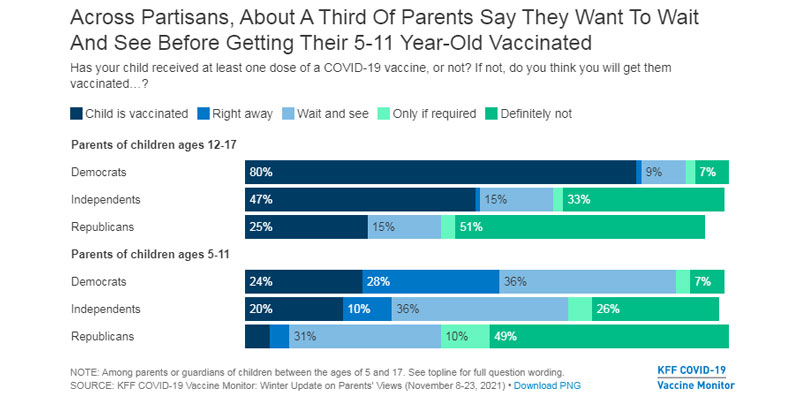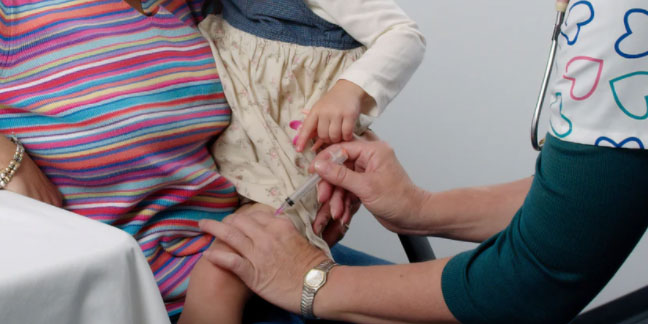One part of my diagnosis of Rhode Island’s problems is that it’s just not big enough for opposing factions to build up and keep each other honest in state-level government. Pushback against the New York governor’s mask mandate at the county level brough that to mind:
At least 13 counties in New York state are telling newly-tapped Democrat Gov. Kathy Hochul that they will not be enforcing her mask mandate on private businesses — and some of the county leaders are letting their displeasure over the “dictate” be known.
According to the New York Post, Orange County Executive Steve Neuhaus ripped Hochul, telling the governor he opposes “using Gestapo tactics and going business to business and asking them if they are enforcing masking.”
Of course, we don’t have county governments in RI, and the municipalities are all very close and very dependent on the state government, so resistence generally has to come from outside of government.
[Open full post]Rhode Island Republican House Minority Leader Blake Filippi lays out the simple steps of his argument that Democrat Governor Dan McKee is acting outside of his authority by continuing the COVID state of emergency:
A thread on the lawlessness of @GovDanMcKee’s emergency powers:
§30-15-9 used to allow the Governor to declare an emergency with no end date. A state of emergency was ended by the Governor, or by the House and Senate both passing resolutions to end it.
In 2021, Republicans and many of our Democratic colleagues sought to limit the duration of emergencies.
We included language in the budget that limited emergencies to 180-days, unless both the House and Senate passed resolutions extending it.
The state of emergency declared by Governor Raimondo effectively terminated upon the passage of the budget in June, 2021 (absent several executive orders that were allowed to continue until 9/1/21).
Rather than obtain House and Senate approval to lawfully continue the state of emergency, on 8/19/21 Governor McKee declared a “new” state of emergency due to the Delta variant, ostensibly giving himself another 180 day period to legislate via executive order.
Delta is a variation of COVID-19.
Delta cannot constitute a new emergency under which the 180-day limitation may be ignored.
Otherwise, the COVID-19 emergency may be continued in perpetuity by declaring a new emergency every time it mutates, thus nullify the 180-day law.
There is extensive precedent whereby courts are reluctant involve themselves in emergencies – they leave it to the Governor and the Legislature to battle it out.
Unfortunately, the House and Senate have failed to rein in the Governor’s abuse of emergency authority.
Left without judicial or legislative remedies for this lawlessness, the People’s remedy is civil disobedience and the ballot box in November.
Of course, our civic system is so tilted, the ballot box isn’t going to be much help on this particular issue.
I’m inclined to be a little harder-edged than Filippi, here. The situation reminds me of a time I was playing Dungeons & Dragons at summer camp and the dungeon master allowed me to use my third wish on a magic sword to renew my wishes over and over. (He probably should have made that decision contingent on a roll of the 20-sided die, or something.)
Legislators should have known (and some probably did) that the new 180-day limit would have to be very well defined in order to be absolutely final. All McKee has done, essentially, is to shift from ordering the emergency continued every 30 days to ordering it renewed every 180. It’s a word game that a free people would find insulting if they were paying attention and cared about their rights.
Be that as it may, the real source of this abuse of our rights is not the ability of the governor to extend an emergency, but the clouded thinking about what emergency orders are for. They should only apply to situations when the legislature simply can’t be convened in time to address a major danger to people in the state. Managing a virus over years, months, or even weeks should not be eligible no matter how many executive orders the governor pulls out of the magic bag he received as a gift when the dungeon master took the sorceress out of the game.
Featured image by Justin Katz.
[Open full post]I’m more or less with Stephen Green on this question:
I really want to catch the omicron variant, and the sooner the better. …
The best part? That Israeli study showing that a combination of natural immunity plus vaccination is the best protection against some nastier variant.
I already got the shots. Now science is telling me I can add natural immunity without risking my cherished indulgence in food and drink?
We’re built to catch bugs, fight them off, and then mutually adapt with them to coexist. Treating any variant of the virus as if it is as deadly and unknown as the original actively does harm. If it is still the case that Omicron has killed nobody, why are we sweating it?
[Open full post]When people in government are pushing for new programs, especially programs to extract money from the economy, it’s crucial to remember all the little unforeseen events — inconveniences, errors, and so on. The fact that nothing ever works as perfectly in real life as it does on paper is why voters and taxpayers ought always to have a baseline skepticism.
Truck toll gantries in Rhode Island are supposed to only be charging big trucks, but the NBC 10 I-Team learned that hasn’t always been the case.
Hundreds of people in passenger vehicles have been getting erroneously charged, including Lori Messier of Warwick.
At a minimum, this sort of automatic tolling adds a general need to keep an eye on your statements. It’s another thing. And although the state is trying to track all of these people down pro-actively, the cost of their time skims off the value of the program in the first place.
[Open full post]Understandably the text and numbers provided in news stories about the record-setting run of a male swimmer identifying as a female in Ivy League competitions are kind of abstract to most people. Matt Walsh provides video of Princeton’s trans superstar lapping the competition:
Just to show you how absurd this is. Here’s the trans swimmer “Lia” Thomas crushing all of the female competitors by 40 seconds. This is what that looks like in real time. A total farce.
— Matt Walsh (@MattWalshBlog) December 15, 2021
[Open full post]
The latest impositions on the lives of Rhode Islanders from Democrat Governor Dan McKee to make a show of doing something about COVID-19 raise two sequential questions:
- When did we all agree that the role of government is to enforce blanket rules for responsible behavior, rather than to safeguard rights and help manage the conflicting claims to which freedom can lead?
- To the extent that is government’s role, under what authority, or even reasonable standard, does the government force private businesses to act on its behalf to enforce those blanket rules?
Specifically, starting Monday, McKee has decreed that all indoor venues with a capacity of more than 250 people must enforce a mask mandate for everybody who enters the building.
Smaller establishments arguably get a worse deal: they can dangle mask freedom in front of customers if they either state that all employees and customers must be vaccinated or check everybody’s proof of vaccination at the door. This is a recipe for expense, revenue loss, and conflict no matter which option they choose.
Businesses of all sizes that do not have customers entering the premises in that way must follow the small-venue rules, mandating masks, mandating vaccines, or requiring proof of vaccination to avoid masks.
This policy is designed to allow a politician to claim that he has taken action while ensuring that other people take as much direct blame as he can offload. One wonders if his health and economic advisors gave any thought to the likely effects. One needn’t break out the social science research and build a spreadsheet-based model to predict that the people who will comply with the option-based mandate will be much more likely to have been vaccinated, anyway. Meanwhile, those who are not vaccinated will either dare businesses to card them or deprive those businesses of revenue and employees.
This problem of superficial consideration affects the other components of McKee’s “comprehensive” plan, too. On the testing front, McKee recognizes that labs are taking ridiculously long to return test results, but his solution is to distribute free home-based rapid tests. Unfortunately, these tests provide almost no value when it comes to mandates; only the slow PCR tests do that. For this provision to do any good whatsoever, McKee would have to require that organizations accept rapid tests in some circumstances. The fear mongers claim they aren’t reliable, but they are reasonably reliable when the person has symptoms, as a way to tell whether COVID is the cause of those symptoms.
Similarly, McKee announced a handful of additional public school districts that will be able to utilize “test and stay” policies so that students who have had close contact with others who tested positive for COVID can use a rapid test each morning for 10 days and stay in school if they have no symptoms. There are two catches, though. A source in one school tells me that this policy only applies if the close contact was in the school, not at home or elsewhere. Moreover, as stated above, the rapid tests are least reliable when a person has no symptoms. If the goal is to manage a disease rather than manage the government mandates, this is little better than a waste of money.
Unfortunately, nobody in this state wants to show the leadership to accept responsibility for the reality of risk, with the notable exception of Roman Catholic Bishop Thomas Tobin. He “encourages” Catholics to follow guidance for masking and to be vaccinated, but he affirms that “no individual should be turned away from Mass or singled out if they choose not to wear a mask.” In fact, Tobin goes farther, to affirm that “individuals may have good and substantive reasons for not doing so” while also insisting that “liturgical ministers… are not expected to wear masks while actively participating in the liturgy.”
Reading the bishop’s statement, one suspects that his “fervent prayers that Almighty God will lift this terrible pandemic from our midst” applies, as well, to the pandemic of government overreach.
Featured image by Sebastiaan Stam on Unsplash.
[Open full post]Overly frightened people with a casual attitude about others’ right to disagree with them may be talking as if you’re unleashing death bombs on your community if you don’t subject your children to COVID-19 vaccines, but nationally, at least, you’re not alone:
Around 29% of parents with kids ages 5 to 11 said their kid is vaccinated or they are going to be “right away.” However, “about a third of parents of children ages 5 to 11 say they want to wait and see how the vaccine is working for others before getting their younger child vaccinated. About three in ten parents say they will definitely not get their younger child vaccinated, and a further 7% say they will only do so if their school requires it,” the KFF report stated.
As shown in the following chart from KFF, even among Democrats, whose 12-17-year-old children are over 80% vaccinated, only about half have or plan to have their 5-11-year-old children vaccinated. It’d be interesting to see how this data distributes by the age of the child. I’d wager a good portion of the people who say they’ll vaccinate their children “right away” have kids who are near the older age group.

It’s also interesting to note that, on the question of vaccinating young children, all racial groups fall between the positions of Republicans and Independents. As with much else in our current condition, the dividing line on something non-partisan appears to be partisan, but only for Democrats.
Featured image by the CDC on Unsplash.
[Open full post]Those who think that a Christian flag should be unique in being disallowed from public flagpoles may not be bigots:
Over the past 12 years there have been 284 flags—from LGBTQ rainbow flags, a Turkish flag with the Islamic star, to Communist China flags—raised on a public flagpole owned by the city of Boston.
But when a local civic organization proposed a Christian flag, officials from the city—known as the Cradle of Liberty—said “no”, making it the first time ever that a proposed flag was rejected for the pole.
The debate is now heading to the U.S. Supreme Court (SCOTUS) with some unlikely bedfellows in support of the Christian organization bringing the case to the nation’s highest court.
It’s likely an indication of confusion begotten of system anti-Christian bias. These folks really are confused about what it means to “establish religion”; they’re stuck in a mindset where that which is broadly believed or traditional has to be suppressed in order to affirm the right not to believe it, while minority beliefs must be amplified to affirm the right to believe them. That’s not how freedom, rights, or even tolerance are supposed to work.
[Open full post]





